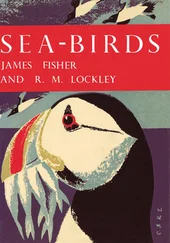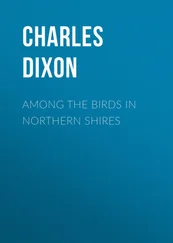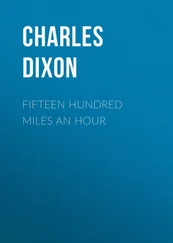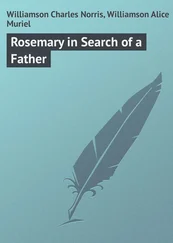Charles Dixon - British Sea Birds
Здесь есть возможность читать онлайн «Charles Dixon - British Sea Birds» — ознакомительный отрывок электронной книги совершенно бесплатно, а после прочтения отрывка купить полную версию. В некоторых случаях можно слушать аудио, скачать через торрент в формате fb2 и присутствует краткое содержание. Жанр: foreign_antique, foreign_prose, на английском языке. Описание произведения, (предисловие) а так же отзывы посетителей доступны на портале библиотеки ЛибКат.
- Название:British Sea Birds
- Автор:
- Жанр:
- Год:неизвестен
- ISBN:нет данных
- Рейтинг книги:3 / 5. Голосов: 1
-
Избранное:Добавить в избранное
- Отзывы:
-
Ваша оценка:
- 60
- 1
- 2
- 3
- 4
- 5
British Sea Birds: краткое содержание, описание и аннотация
Предлагаем к чтению аннотацию, описание, краткое содержание или предисловие (зависит от того, что написал сам автор книги «British Sea Birds»). Если вы не нашли необходимую информацию о книге — напишите в комментариях, мы постараемся отыскать её.
British Sea Birds — читать онлайн ознакомительный отрывок
Ниже представлен текст книги, разбитый по страницам. Система сохранения места последней прочитанной страницы, позволяет с удобством читать онлайн бесплатно книгу «British Sea Birds», без необходимости каждый раз заново искать на чём Вы остановились. Поставьте закладку, и сможете в любой момент перейти на страницу, на которой закончили чтение.
Интервал:
Закладка:
By the end of April most of the adult Common Gulls have left all our southern coasts and retired northwards to their breeding places. As these are visited yearly in succession, it is not improbable that this Gull pairs for life. Its nest colonies are situated both inland and on the coast. An island in a mountain lake, the marshy shore of a loch, the flat table-like summit of a rock stack, or the rolling grassy downs near the open sea, in little populated districts, may be chosen; but so far as my experience with this Gull extends, I have found the favourite site to be rocky islands in quiet secluded sea-lochs. These colonies of Common Gulls vary a good deal in size; and in some districts, perhaps where suitable sites are scarce, the bird breeds in scattered pairs only. The eggs are laid during the last half of May and the first half of June; only one brood is reared in the season, but if the first eggs are taken they are generally replaced. The nest of this Gull varies much in size; some structures are mere hollows lined with a tuft or two of grass; others are more elaborate, composed of heather stems, pieces of turf, sea-weed, and stalks of marine plants, lined with finer grass, often gathered green. They are built indiscriminately amongst the long herbage, in hollows and crevices of rocks, or on ledges of the bare cliffs. In Norway the eggs of this Gull have been taken from the deserted nest of a Hooded Crow, in a pine tree, but no instances of a similar character have occurred, so far as is known, in our islands. The Common Gull usually lays three eggs, but instances of four are not rare. They run from olive-brown to buffish-brown in ground colour, spotted and often streaked with darker brown and brownish-gray. The eggs of this Gull are extremely good eating. One often wonders why they are not gathered for the table, just as much as those of the Lapwing.
This charming Gull, the Larus tridactylus of scientists, so named from its entirely absent or rudimentary hind toe, is one of the best known, as it is one of the most widely distributed, British species. These remarks are however most applicable to the non-breeding season; for during the nesting time it is rather more local, owing to the conditions under which its young are reared. The Kittiwake very closely resembles the Common Gull in general appearance, but the mantle is paler, the legs and feet are dark brown, and the primaries, or longest feathers of the wings, have broad black tips: it is also a perceptibly smaller bird, the smallest in fact of the typically marine Gulls. Of all the British Gulls the Kittiwake is certainly the most maritime in its habits, and is never known to visit inland districts, unless driven from the coast by storms of exceptional violence. Save in the breeding season it may be met with on all the low-lying coasts, visiting harbours, bays, and fishing villages, and imbuing many a littoral scene with life. The Kittiwake is a much more oceanic bird than the Common Gull, and often wanders immense distances from land in quest of food. It is said that birds of this species have been known to follow vessels across the North Atlantic, but this seems almost incredible – not because the bird is physically unable to perform the feat, but because we can scarcely believe any bird would wander of its own free-will so far from the local centre of its habitat. One of the most striking characteristics of the Kittiwake is its peculiar cry, heard to the best advantage at the nesting places. This note, from which the colloquial name of the species is derived, resembles the syllables kitty-a-ake , requiring but little play upon the imagination to render as get-a-way-ah-get-away . It is only during the breeding season that this cry is heard to perfection, and after that is over the bird becomes a singularly silent one. The flight of this Gull is light and buoyant, but powerful and often long sustained. The bird may often be observed fishing at no great distance from shore, flying to and fro every now and then, poising and hovering previous to pouncing down upon a fish or other floating object. It is also an adept swimmer, and very frequently sleeps whilst sitting on the waves. The Kittiwake is perhaps more exclusively a fish-feeder than any other British Gull. It seldom searches for food on shore, and does not exhibit those omnivorous tastes that characterise so many of its congeners. It is a persistent follower of fish shoals, especially herrings and sprats, and will remain in the company of fishing fleets for weeks together. A scrap of food thrown from a ship will speedily be seized by one of these birds; whilst a few crustaceans and other marine creatures are taken from time to time.
The Kittiwake is a rather late breeder. It most probably pairs for life, as the same nesting places are resorted to each season. Of all the Gulls none breed in more inaccessible situations. The nests are almost always built upon a beetling ocean cliff, against which the waves are for ever beating in ceaseless strife. Except during the three months or so of the breeding season, this Gull is seldom seen at its nesting sites. In April or May the birds collect at their various stations, never quite to leave them again until the young are able to fly. It is a very gregarious bird, and some of these “gulleries” are very extensive, containing many thousands of pairs. In some localities, however, where the accommodation is either limited or unsuitable, but a few birds congregate to form a colony. The nests, often made as close together as they can be wedged, are built upon the ledges, shelves, and prominences of the rocks. Favourite spots are where the cliffs overhang, or at the entrance of a cave or hollow in the precipice. They are made at varying heights on the cliff, tier above tier, the lowest often within a few feet of high-water mark, but the most crowded places are usually about midway up from the sea. The nests are large and well made, many of them apparently the accumulation of years, composed externally of turf and roots, with much of the soil attached, and caked together. Upon this foundation a further nest of sea-weed and the stalks of various plants is formed, finally lined with finer and dry grass, and sometimes a few feathers. The nests and the cliffs in their vicinity are thickly whitewashed with the droppings of the birds. The eggs are two or three in number, rarely four, and vary from greenish-blue, through pale buff and buffish-brown to brownish-olive, blotched and spotted with reddish-brown, paler brown, and gray. No words of mine can adequately describe the beauty and animation of a colony of Kittiwakes. Their cries are deafening, and when the frightened birds flutter from the cliffs, and pass to and fro in thousands like a living snowstorm, the effect, whether seen from the water or from the cliffs above is charming in the extreme. It is sad to think that such a spot should too often become a scene of slaughter. But such is the case; the poor birds breeding too late fully to profit by the protection afforded by law. Vast numbers of this pretty gentle Gull are killed yearly, for the sake of their plumage. Even when the breeding places are left, the poor birds are shot in thousands out at sea. The Kittiwake is the most trustful perhaps of the Gulls, and a flock will remain hovering round a boat until almost decimated by the gunners. The young Kittiwake is widely known along the coast under the name of “Tarrock.”
In most inland districts frequented by this Gull (the Larus ridibundus of Linnæus) it is known as the “Peewit,” the “Peewit Gull,” or the “Laughing Gull.” It is not only one of the most widely distributed but one of the best known of our sea birds. And yet to describe the Black-headed Gull as a “sea” bird in the sense we have hitherto used the term is, to say the least, somewhat misleading. This species belongs to a small group which might more appropriately be termed “marsh” Gulls. It is almost as much seen in certain inland localities as it is in marine ones; whilst in many of its habits it bears a close resemblance to the Rook – feeding on the pastures, following the plough, and perching regularly in trees. During spring and summer many of these Gulls resort to inland haunts to breed – as for instance at Scoulton Mere in Norfolk, Twigmoor in Lincolnshire, and Aqualate Mere in Staffordshire – and from these centres visit the surrounding country for miles, in quest of food. Slob-lands and low muddy coasts are favourite haunts of this Gull, but during the non-breeding season it may be met with on almost all parts of the coast. In winter it often wanders up the larger tidal rivers for miles; and the Gulls that visited the Thames in such abundance during recent winters, were principally of this species, doubtless from Norfolk and Essex. Many of these Gulls appear to pass our southern coasts, especially in spring, and I have remarked them again in great plenty during the sprat season in late autumn. I may in addition state that this migration has been observed along the coast of South Devon, the nearest breeding station being near Poole in Dorset. The birds linger about Tor Bay in spring until, in many cases, the full breeding plumage – the sooty-brown head – is assumed.
Читать дальшеИнтервал:
Закладка:
Похожие книги на «British Sea Birds»
Представляем Вашему вниманию похожие книги на «British Sea Birds» списком для выбора. Мы отобрали схожую по названию и смыслу литературу в надежде предоставить читателям больше вариантов отыскать новые, интересные, ещё непрочитанные произведения.
Обсуждение, отзывы о книге «British Sea Birds» и просто собственные мнения читателей. Оставьте ваши комментарии, напишите, что Вы думаете о произведении, его смысле или главных героях. Укажите что конкретно понравилось, а что нет, и почему Вы так считаете.












